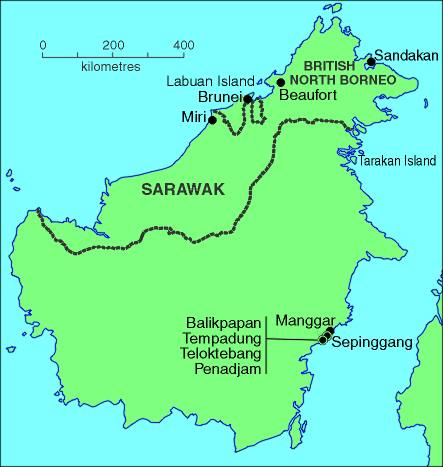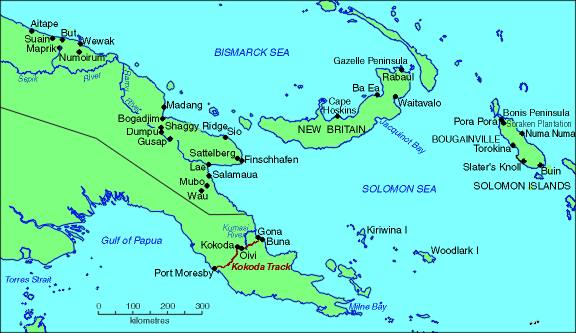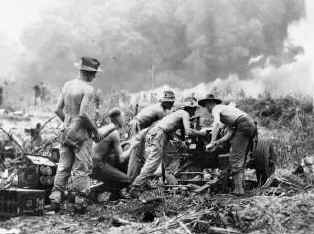The Pacific War began because Japan was trying to obtain supplies of raw materials - such as rubber and tin - which were vital to its industrial expansion. It was also seeking to create a great Empire in Asia. It launched invasions of Thailand and Malaya, and attacked the American naval base at Pearl Harbour in Hawaii. The United States was the only country with sufficient naval power to oppose Japan in the Pacific - but the Japanese missed their most vital target in the Pearl Harbour attack, the American aircraft carriers.
The Japanese soon fought their way down the Malayan Peninsula to Singapore, the supposedly mighty British fortress which would stop them. Singapore fell in February 1942 and thousands of Allied troops, including over 15,000 Australians, became prisoners of the Japanese. The Japanese advance towards Australia was eventually stopped in New Guinea, first by our own soldiers and then with the help of American forces.
 MAP OF BORNEO
MAP OF BORNEO
 MAP OF NEW GUINEA AREA
MAP OF NEW GUINEA AREA

Like to copy this image? Please click here first
Balikpapan, Borneo, 1945. Australian artillerymen of 8th Battery, 2/4th Australian Field Regiment, in action at the landing at Balikpapan, pounding Japanese positions 6000 yards away. (Image provided by AWM)
The Japanese invasion fleet was defeated in the naval Battles of the Coral Sea and Midway; their army suffered its first major defeats at Buna and Gona early in 1943; throughout the remainder of the war they suffered defeats in New Guinea and Borneo; yet it was not until 15 August 1945 before the tenacious Japanese surrendered after atomic bombs were dropped on the cities of Hiroshima and Nagasaki.





